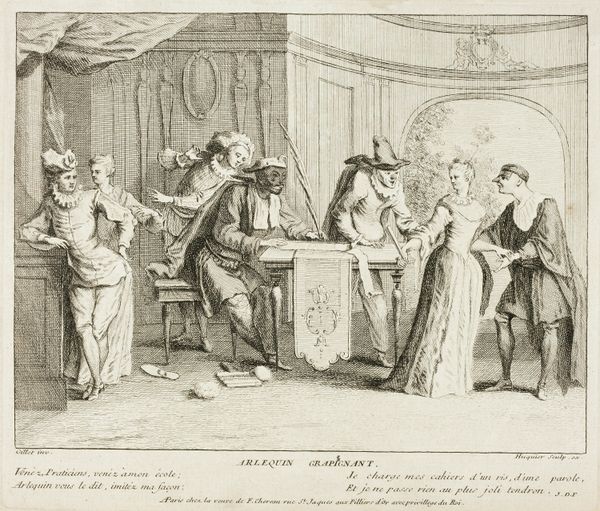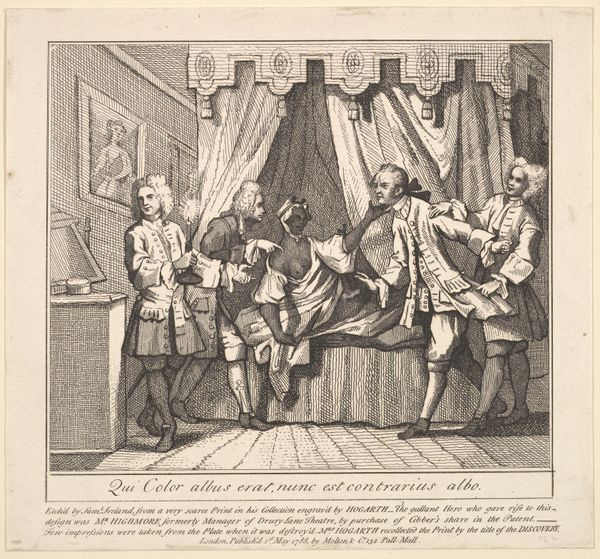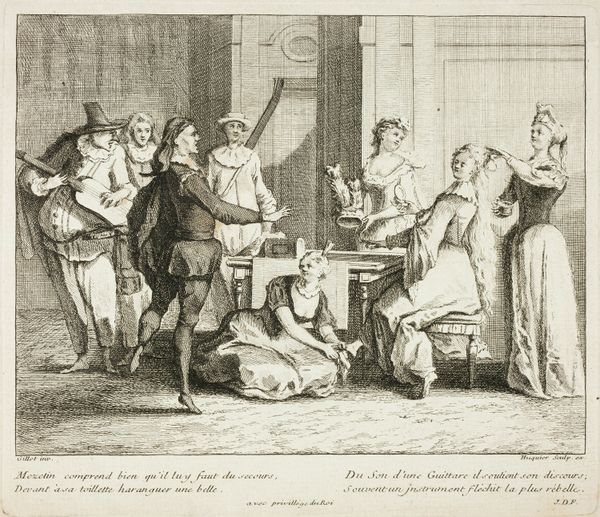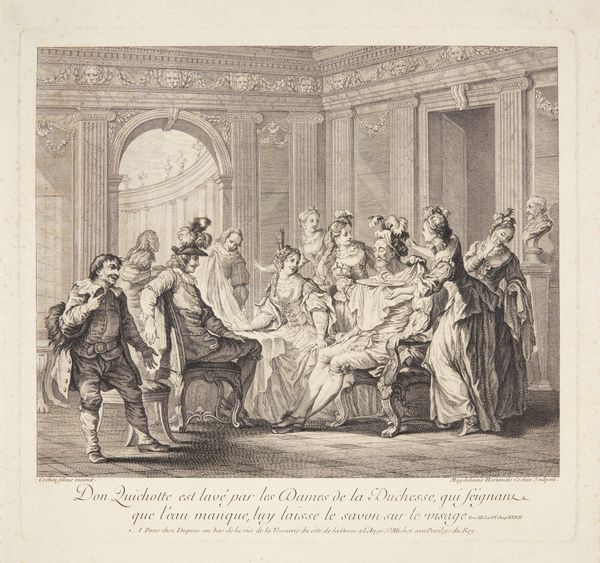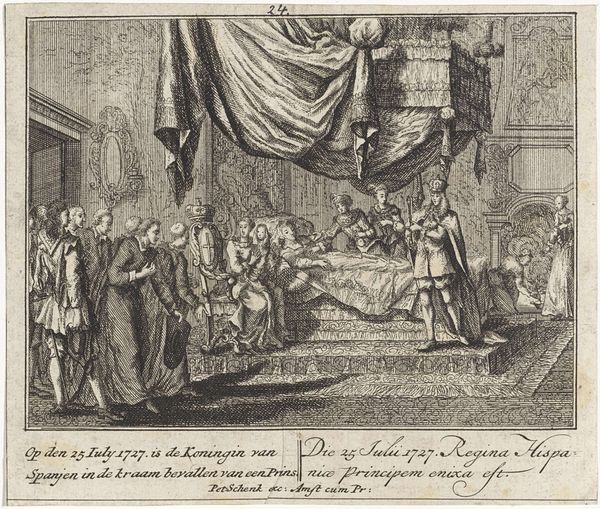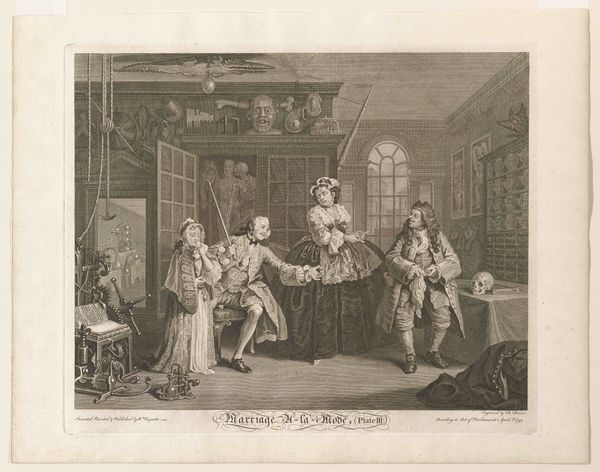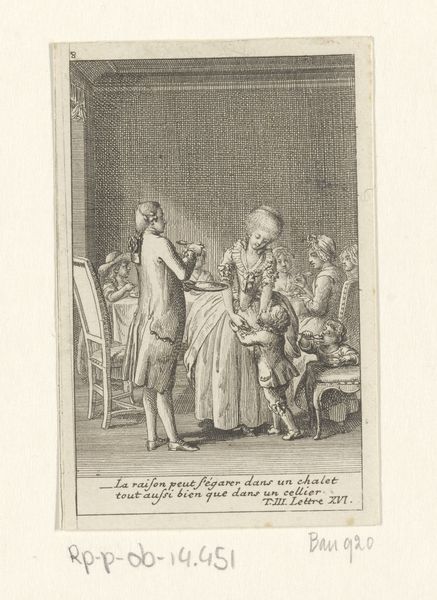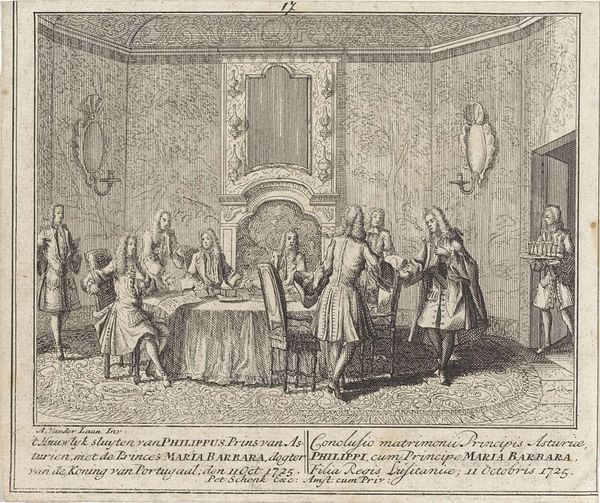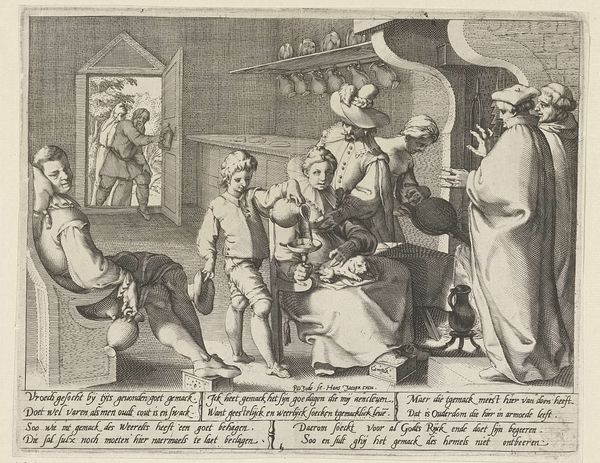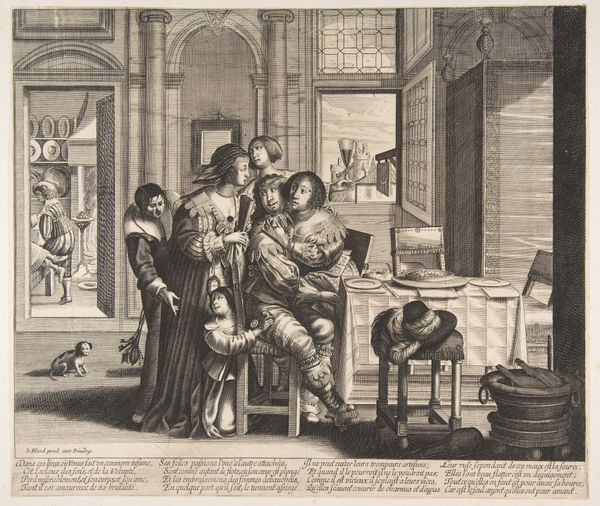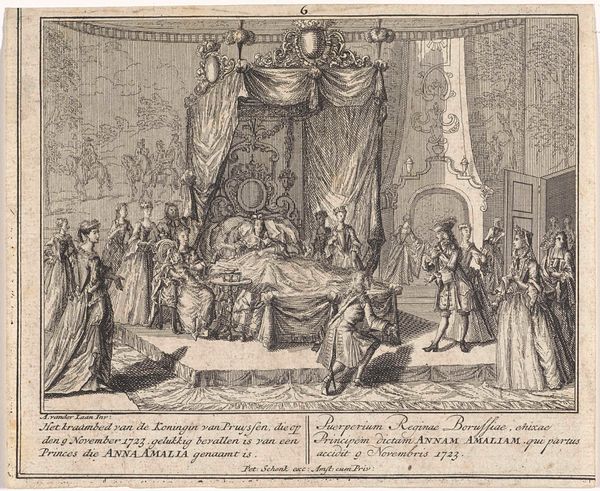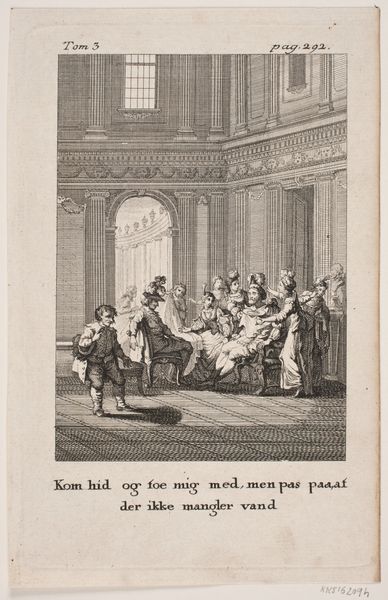
drawing, print, engraving
#
drawing
#
baroque
# print
#
men
#
genre-painting
#
history-painting
#
engraving
Dimensions: 7 15/16 x 9 1/4 in. (20.1 x 23.5 cm)
Copyright: Public Domain
Curator: Ah, here we are in front of Claude Gillot's etching "Arlequin Mecontent de Son Peintre", created sometime between 1685 and 1722. The Metropolitan Museum holds this particular print. Editor: My goodness, what a disgruntled face! It has that 18th-century feel – a bit theatrical, with all the drama bubbling beneath the surface. The stark line work gives it a sharp bite, like a witty insult ready to fly. Curator: Precisely! Gillot was known for his depictions of theatrical scenes, particularly from the Comédie-Italienne. What we see here is Harlequin, a classic character, evidently displeased with his portrait. He's surrounded by figures who seem to enjoy his anger or possibly exasperated by it. Editor: It's the artist's gesture, though! The dramatic sweep of his arm aiming towards the canvas – it’s performative rage turned up to eleven. Notice how it mirrors Harlequin’s posture. The painter himself is hunched, focused. What do you make of this comparison? Curator: A commentary on the artist's power, perhaps? Gillot, as the creator of the image, positions the artist figure as an almost satirical counterpart, underscoring that creative decisions impact how we view the character, what choices of realism and imagination. We've also got this wonderfully staged composition and baroque setting, drawing our eyes around this whole situation that plays like a social comedy of errors. Editor: There’s tension in the asymmetry, too. Harlequin and the artist take up one side and this cluster of onlookers occupy the left side creating a lovely dynamism in the entire piece, almost inviting us to choose sides in this creative conflict! Curator: Ultimately, it really does showcase a fascinating peek into the artist-patron relationship of the time—highlighting not just the creation of art but the complex social dance that surrounded it, one that has threads and tones that resonate today. Editor: Exactly. It leaves us pondering who truly holds the power in the act of representation and the cost to making an art work for yourself versus someone else. Intriguing!
Comments
No comments
Be the first to comment and join the conversation on the ultimate creative platform.
